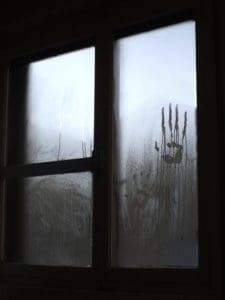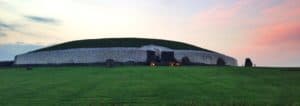Mad Men’s New York: A Guide to Retro Spots for Draper Devotees
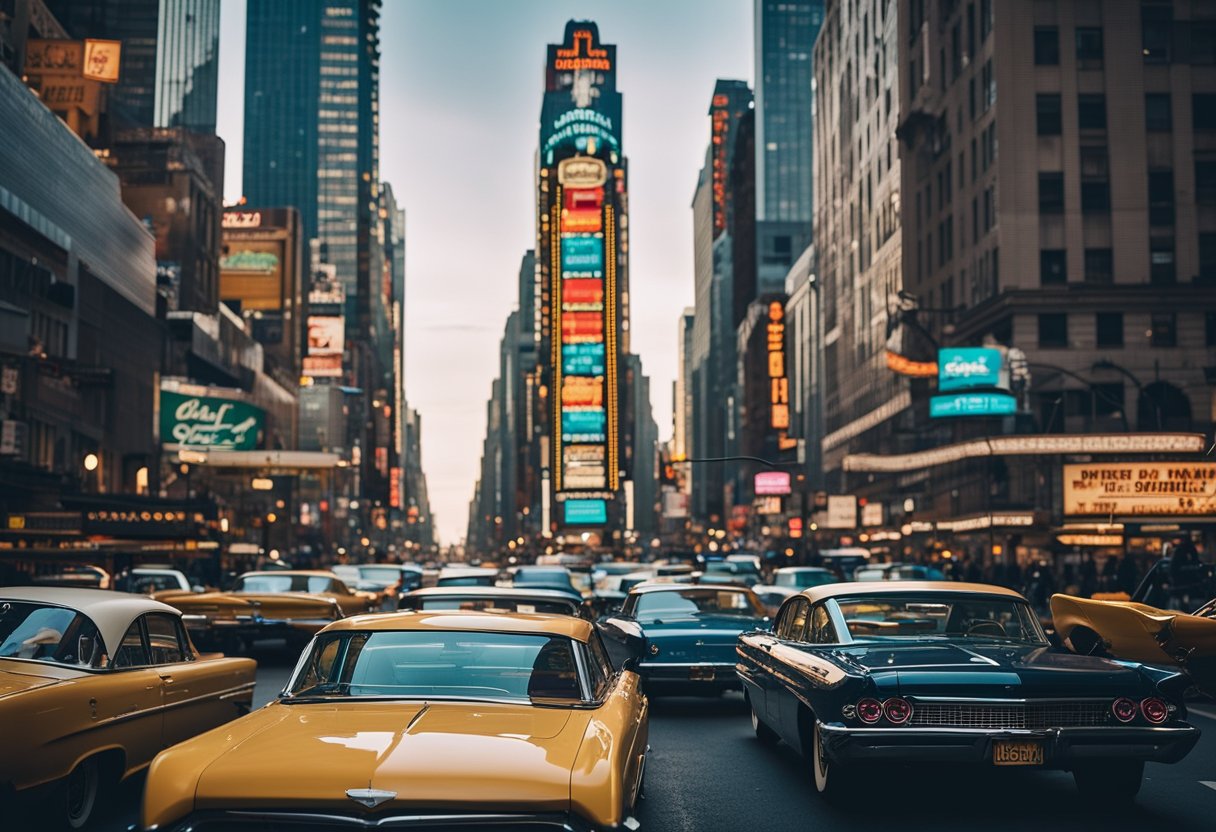
Updated On: April 24, 2024 by Marwa Alaa
As we stroll down the bustling avenues and through the smoky boardrooms of Mad Men, we embrace the nostalgia of New York during the 1960s. This iconic series not only captivated audiences with its sharp dialogue and the complex lives of its characters but also with its meticulous depiction of an era. Centring on the enigmatic Don Draper and the creative hive of Sterling Cooper, Mad Men provides a lens to view the places steeped in advertising lore and mid-century allure that still echo around New York City today.

For devoted fans and history buffs alike, the show’s meticulous attention to detail conjures a passion to experience the remnants of the era that still stand proudly in modern-day New York. The city served as more than just a backdrop—it was a character in its own right, influencing and being influenced by the people who lived in and visited its storied establishments. Our journey takes us from the wood-panelled offices where campaigns were born to the glamorous bars and restaurants where Madison Avenue’s finest unwound after hours.
The Birth of an Era: Sterling Cooper’s Legacy
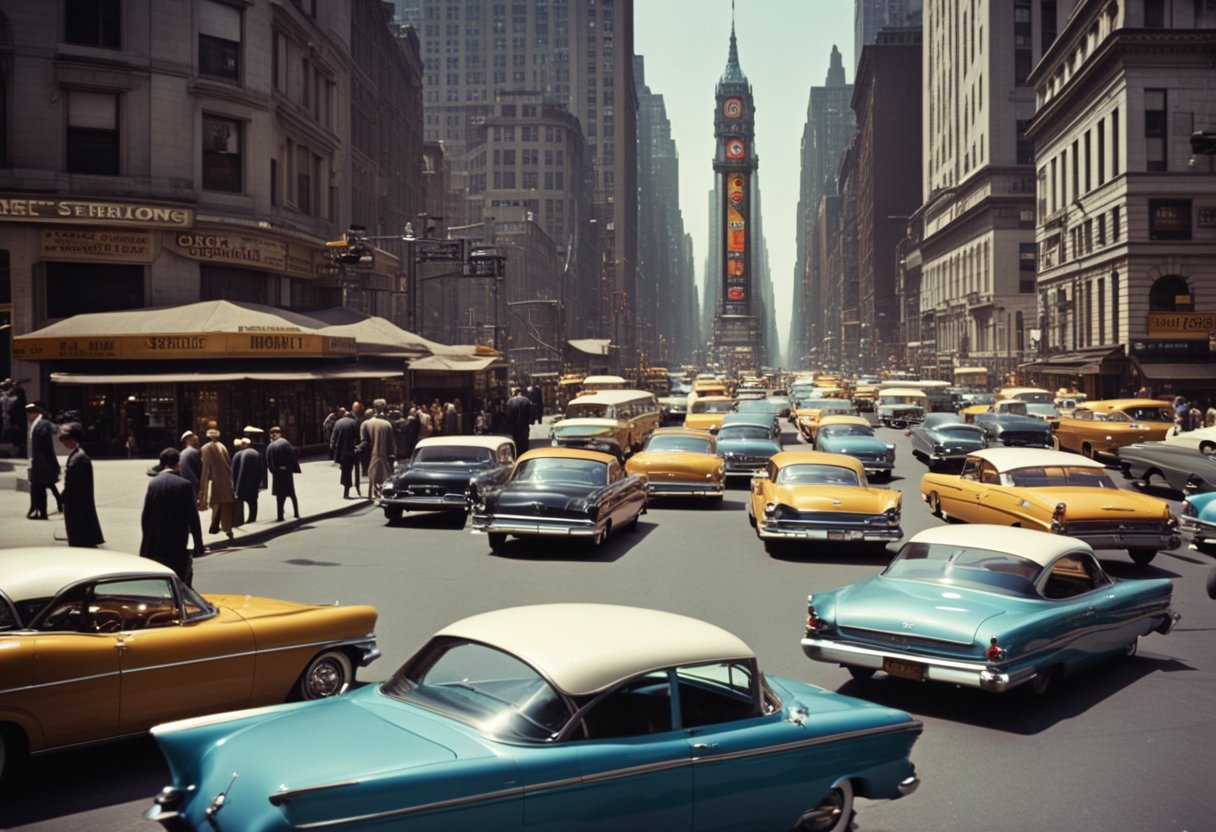
Sterling Cooper began its journey as a cornerstone of the bustling Madison Avenue advertising world, symbolising the golden age of the 1960s. This was a time of great economic prosperity, cultural revolution, and an explosion of creativity in marketing and advertising.
Key Figures and Transformations
- Roger Sterling, one of the founding partners, represented the old guard and the transition to modern advertising tactics.
- Fuelled by creative minds like Don Draper, the agency made its mark on the advertising industry and pop culture.
- Sterling Cooper Draper Pryce was birthed amidst this creative renaissance, encapsulating the spirit of innovation and the shifting American ethos.
Influences and Impressions
- Moments that defined a generation: The firm grappled with the ramifications of John F. Kennedy’s assassination and other historical milestones, infusing their work with a newfound depth of socio-political context.
Agency’s Transformation Timeline
| Era | Agency Name | Noteworthy Shifts |
|---|---|---|
| Early 1960s | Sterling Cooper | Beginnings on Madison Ave |
| Mid-1960s | Sterling Cooper Draper Pryce | Formation of a New Vision |
Cultural Impact
- Sterling Cooper‘s legacy in advertising was more than just selling a product; it was about crafting an identity for brands that resonated deeply with the American public.
- The legacy of Madison Avenue during this time—the ethos, ambience, and pioneering spirit—continues to inspire the advertising world and intrigues those who recall or revere the era.
In essence, Sterling Cooper stood at the crossroads of tradition and change, ultimately shaping the future of advertising and becoming a manifestation of a vibrant, transformative era in both New York and American history.
Don Draper’s New York: Iconic Locations
As fans of the Mad Men series, we can’t help but be enchanted by the suave and complicated world of Don Draper. To walk in his footsteps through New York City is to step back into the 1960s, an era of stylish sophistication and transformative times. Here’s a glimpse at some iconic locations that capture the essence of Don Draper’s New York.
Time-Life Building
This wasn’t just an office for Sterling Cooper Draper Pryce; it was a beacon of the advertising industry of the times. Placed squarely in Midtown, its presence resonates with the ambition and flair of the era.
The Waldorf-Astoria Hotel
Elegance and grandeur define this landmark on Park Avenue, a stone’s throw away from the Madison Avenue ad firms. Draper’s visits here were symbolic of the luxury and excesses of advertising’s golden age.
Fifth Avenue
It’s more than just a street; it’s a symbol of New York’s high life. For Draper, this avenue would have been a daily reminder of the American Dream, manifest in upscale shops and corporate success.
Central Park
An oasis amidst the concrete, Central Park might have offered Don Draper a respite from the high-stakes world of Manhattan – calm within the perpetual motion of the city.
We know that the only constant in New York City is change, yet these places hold stories of times past, echoing the strides of those like Don Draper, who once walked their halls and avenues. It’s a journey of rediscovery, a chance to savour a slice of Manhattan’s tapestry of history resonating with the echoes of Mad Men’s evocative narrative.
Discover more about these locations, rich in ad men lore, through the Time Out article they’ve shared. Revisit the era and create your own narrative by tracing the path of iconic characters through the city’s timeless backdrop.
Exploring the Sterling Cooper Offices

Venturing into the heart of Madison Avenue, we find ourselves at the epicentre of 1960s advertising: the original Sterling Cooper office. Nestled at 405 Madison Avenue, this location epitomises the bustling professional hive of activity where the likes of Roger Sterling and Peggy Olson made their mark.
Inside Sterling Cooper:
- Reception Area: A space that immediately exudes charm and character, welcoming clients and visitors alike.
- Creative Suites: Here, ideas flourished under the watchful eyes of creatives like Peggy Olson.
- Executive Offices: The domain of executives such as Roger Sterling—a testament to the success and clout of the agency.
Venturing deeper into the office, one can almost hear the clacking of typewriters and the buzz of fervent brainstorming sessions in conference rooms. It’s a world where accounts are won and lost, campaigns are birthed, and the ad industry’s history is penned in real time.
Key Characters of Sterling Cooper:
- Roger Sterling: The charismatic co-founder; his office is a sanctum of power and influence.
- Peggy Olson: Beginning as a secretary, she ascends to the creative department, leaving her mark on campaigns and the glass ceiling.
- Joan Holloway: A master of office dynamics, her presence is integral to the Sterling Cooper experience.
The agency’s ethos of hard work, creativity, and cutting-edge advertising remains palpable. For fans of ‘Mad Men,’ this locale isn’t just a point on the map—it’s where television magic was made and provides a peek into the glorious and tumultuous world of 1960s Madison Avenue advertising.
Celebrated Eateries and Bars
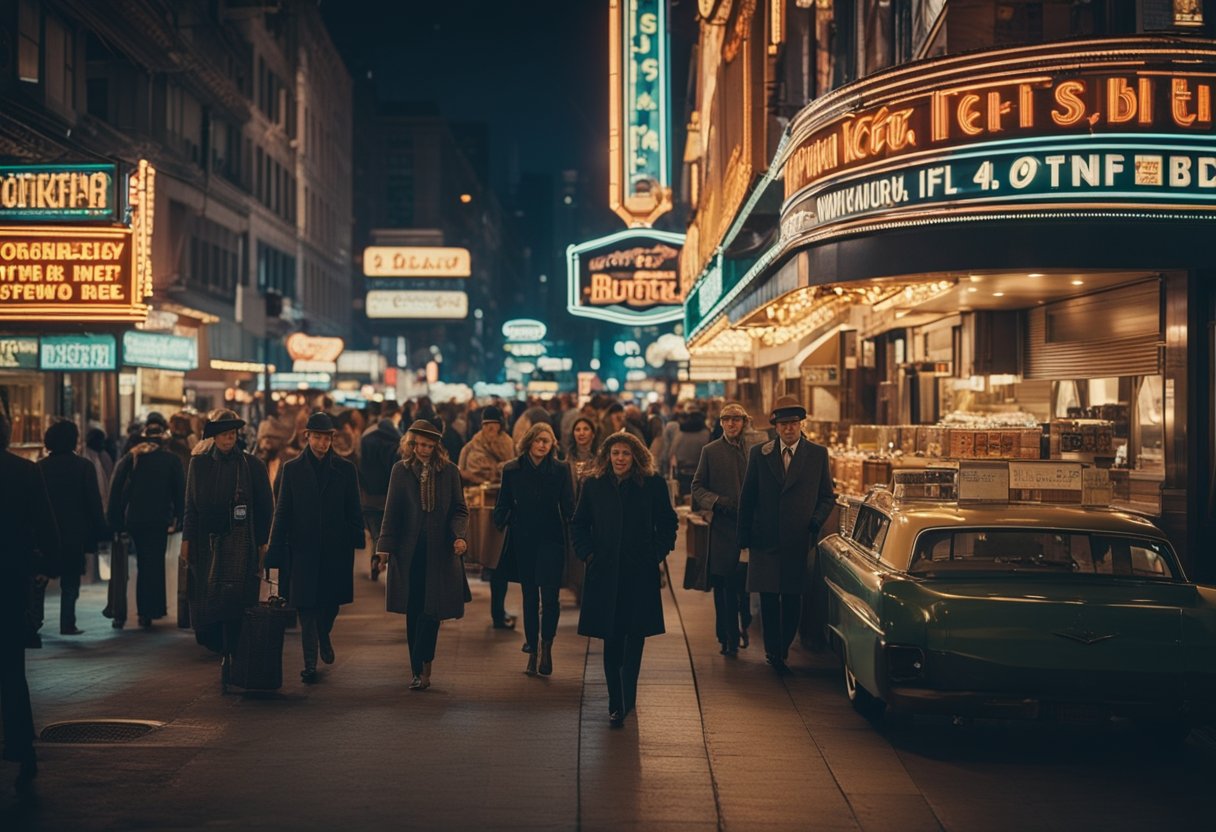
Across New York, Mad Men fans can step into the world of Don Draper through a number of celebrated eateries and bars featured in the show.
Cocktails and Dreams: Memorable Bars
Monkey Bar – This storied establishment serves as a backdrop to the tales of Mad Men, offering a taste of history with its classic cocktails. Fans can envision the show’s characters negotiating deals or unwinding after a long day, all within the wood-panelled walls adorned with the famed Edward Sorel mural. For a sip of nostalgia, the Monkey Bar remains a must-visit locale for any Mad Men enthusiast.
Minetta Tavern – Harking back to old New York, Minetta Tavern provides an ambience that channels the Mad Men era perfectly. A destination for both fans and foodies alike, this tavern’s iconic status is well-deserved, with a history of hosting literary greats and a menu that boasts mouth-watering steaks.
Dining in Style: The Restaurants of Mad Men
Grand Central Oyster Bar – Nestled within the iconic Grand Central Terminal, Grand Central Oyster Bar is a living testament to the glamour of the Mad Men era. Here, a vast selection of oysters awaits, ready to transport diners back to an age of elegance and refinement.
Benihana – Amidst the cultural melting pot of New York, Benihana stands out as a beacon of Japanese cuisine. As patrons are treated to a theatrical teppanyaki experience, they can’t help but reminisce about the times Don Draper and his colleagues would have walked through these doors in search of an exotic dining experience away from the bustling Madison Avenue.
Fashion and the City: From Costumes to Culture
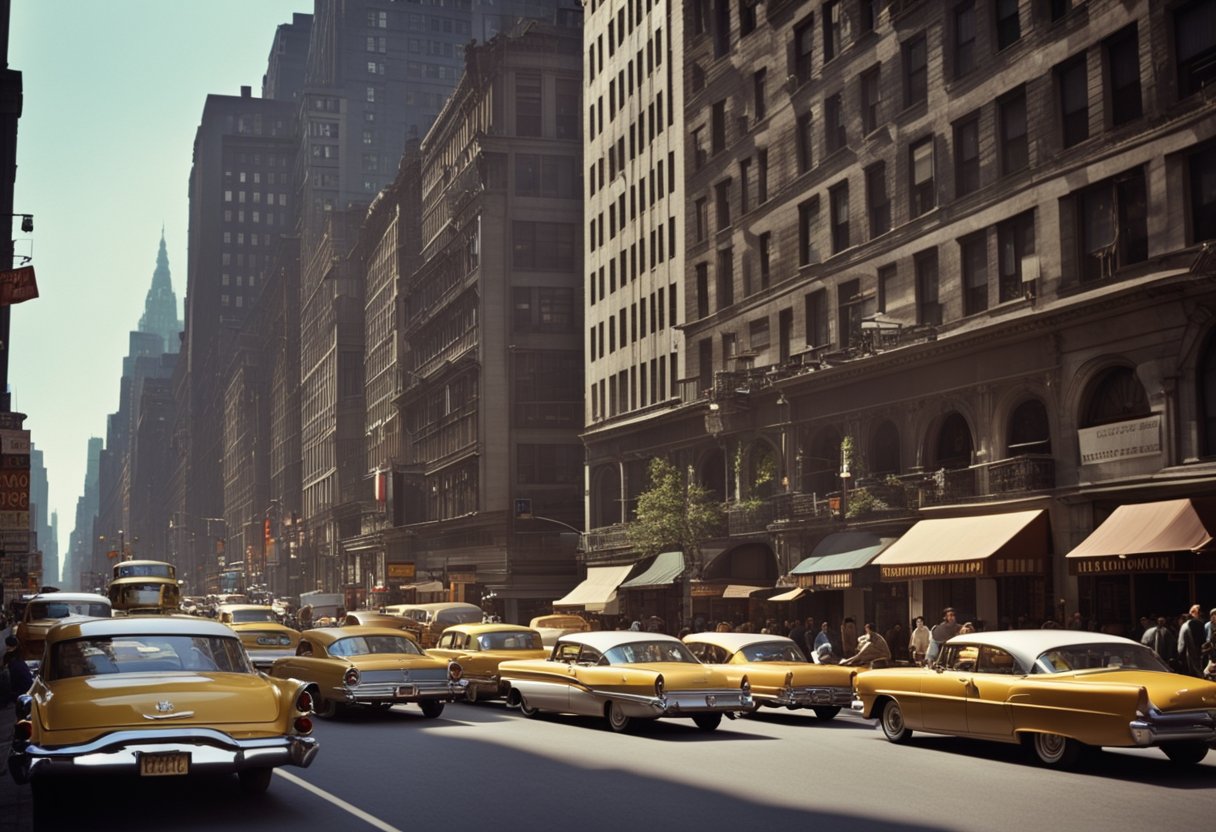
In the hit television series Mad Men, the dazzling array of ’60s fashions is more than mere wardrobe; it’s a window into an era. New York City, the vibrant heart of the show, serves as a canvas for the fashion statements that defined a decade and showcased the talents of costume designers like Janie Bryant. The ’60s styles worn by Don Draper and the ensemble cast didn’t just mirror the times—they also influenced today’s fashion, demonstrating a cyclical love affair with the past.
- Key Elements of ’60s Fashion in Mad Men:
- Nipped Waists: Dresses and skirts that cinched at the waist, epitomising elegance.
- Tailored Suits: The quintessential Don Draper suit that sculpted menswear.
As we stroll through Manhattan, we find echoes of these timeless styles in vintage boutiques and the resonance of ‘Mad Men’s’ aesthetic in modern-day fashion collections. The influence is palpable; the high-waisted skirts, narrow ties, and pocket squares have resurfaced, reminding us that good taste transcends time.
Our cultural landscape, just like the one ‘Mad Men’ painted, reflects and shapes the fabric of society. The costume designs were meticulous in detail, and their influence has spurred revivals in fashion that merge the past’s allure with contemporary sensibilities. We witness the rebirth of the ’60s silhouette in today’s fashion seen across the city.
As we embrace the revival of this fashion era, we are reminded that culture and costume are intrinsically linked. The clothes we discover on the screen become part of our narrative, echoing the city’s ever-evolving identity and our place within it.
Romantic Interludes and Rendezvous
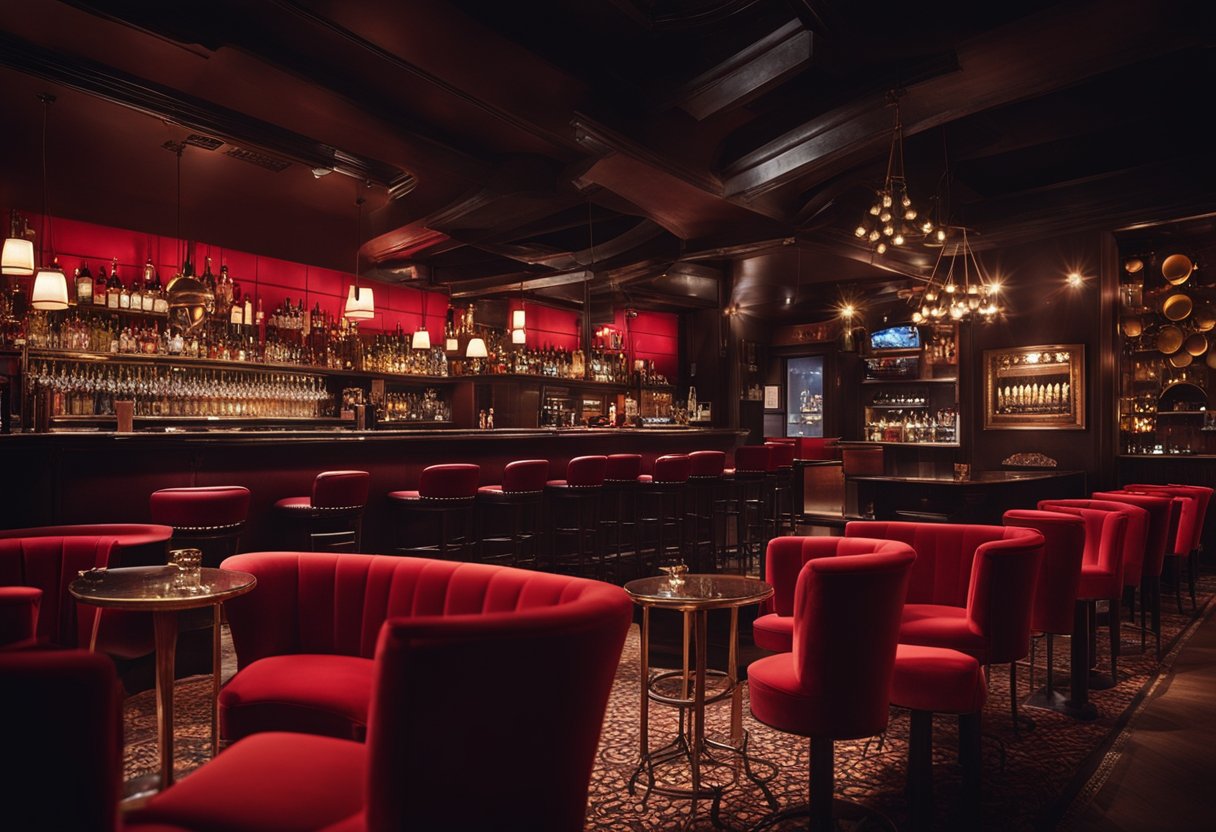
In the whirlwind of Mad Men life, the characters often sought solace in quintessentially New York settings. For fans looking to step into the show’s romantic escapades, the likes of The Plaza Hotel stand as a beacon of luxury, where someone like Betty could envision the illustrious balls and galas of a bygone era.
- The Plaza: The hotel has hosted an array of opulent events and, without a doubt, could have been the backdrop to the Drapers’ glamorous evenings or clandestine meetings.
Peggy Olson, with her progressive edge, might find the dynamics of her relationships evolving in spaces that were a confluence of the classic and the modern—energetic yet intimate.
Matthew Weiner, the series creator, meticulously interwove these locations in the storyline, capturing the essence of the period. They encapsulate the paradox of intimacy in bustling surroundings, reflective of the show’s deep-delving character stories.
For those tracing the paths of the characters:
- Cocktail Bars: Think darkened booths and a clink of glasses in a sultry setting. Here, private conversations hidden away from prying eyes twine with the smoke trails of an after-work indulgence.
In such venues, Mad Men’s ethos materialises, allowing fans to immerse themselves in the retro glam and emotional complexity that defined the show. Our collective nostalgia finds a touchpoint in these spaces, reminding us of the sophisticated veneer and underlying tensions that characterised those on-screen relationships.
The Golden Age of Advertising
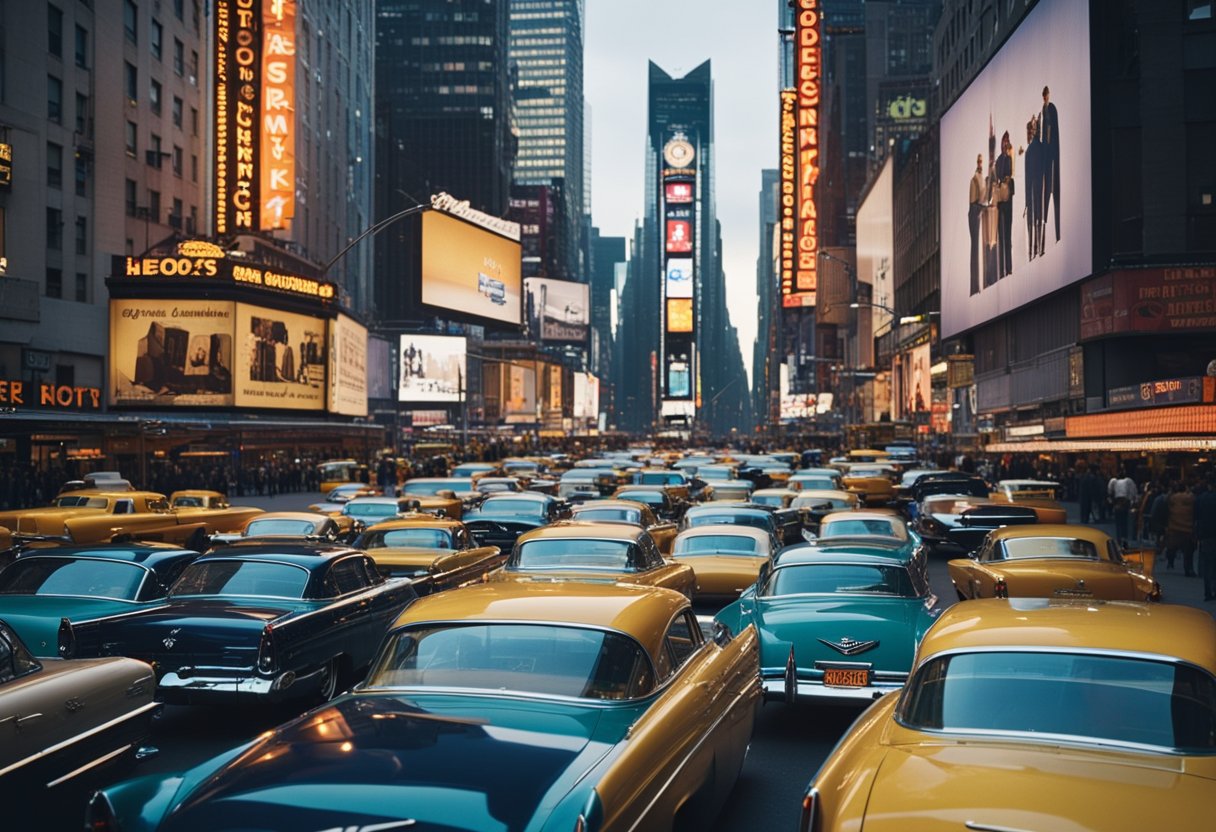
The era known as the Golden Age of Advertising truly transformed the world of marketing and branding. Sterling Cooper, a fictional agency from the celebrated television series Mad Men, embodies the essence of this paradigm-shifting period. During this time, the likes of Roger Sterling and Peggy Olson became iconic symbols of the advertising world’s rapid evolution.
During the 1960s, creative minds thrived, bringing forth innovative advertising approaches that revolutionised consumer culture. Advertising became more than just selling products; it was about crafting compelling narratives and emotional connections that resonated with the audience.
- The traditional “hard sell” was often replaced with witty, clever campaigns that focused on lifestyle and identity.
- Print ads and TV commercials narrated stories, making brands memorable and distinguished in the eyes of consumers.
Peggy, one of the pioneering women in advertising, rose through the ranks in an industry dominated by men. Her character’s development highlights the breakthroughs and challenges women faced in the workspace, especially in fields like advertising.
Clever copywriting and visual storytelling were at the heart of campaigns that sold dreams, not just products. The ideas generated within Sterling Cooper’s conference rooms—inspired by real agencies of the time—painted a vivid picture of a profession on the brink of cultural significance.
In retrospect, the Golden Age laid the foundation for modern marketing and the practices we utilise today. We draw inspiration from that pivotal era, learning about consumer psychology, the power of creativity, and the impact of well-crafted messaging. The narrative of Mad Men may be fictional, but the legacy of the Golden Age of Advertising is anything but.
Mad Men’s Cultural Influence
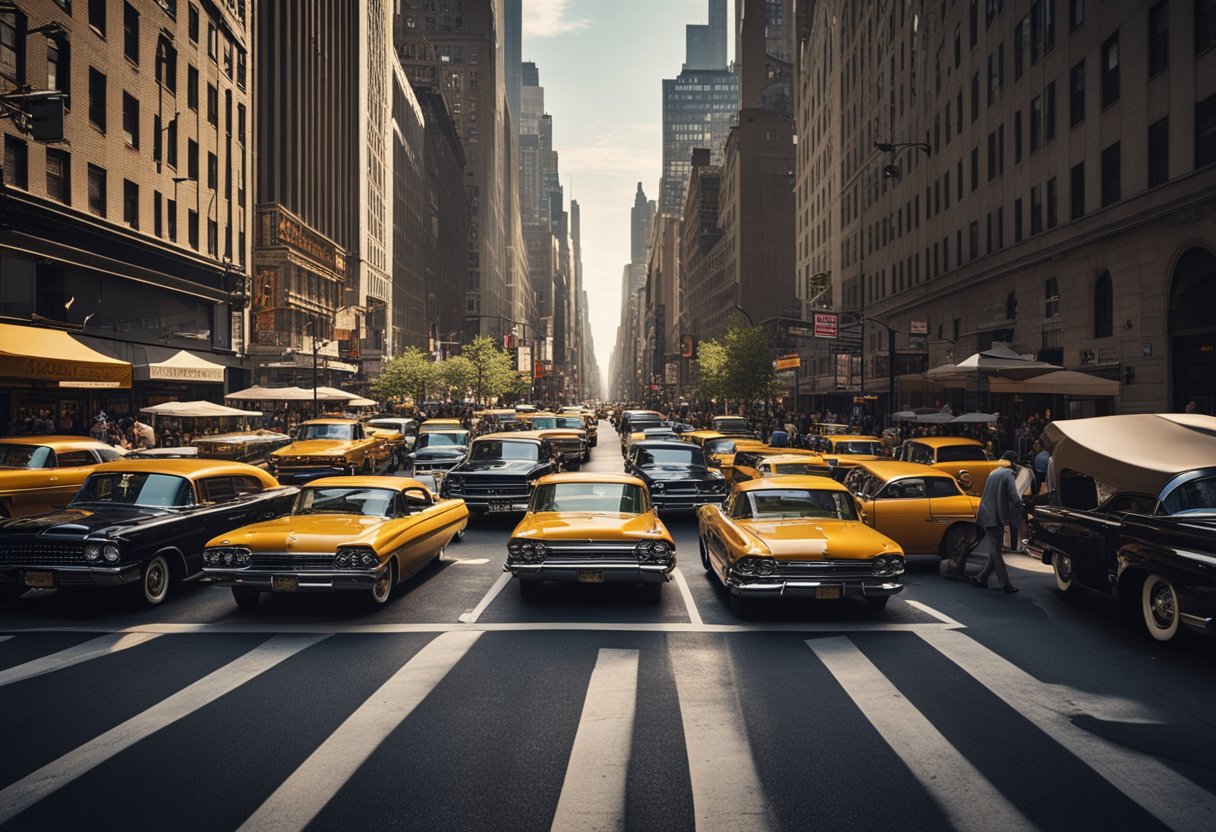
Mad Men captured the essence of 1960s America, offering us a window into the complexity of the era’s social mores through the lens of the advertising world. Its influence on contemporary culture is as rich as the whisky often poured in Don Draper’s office. Drama, woven intricately through its narratives, showcased the intimate lives and personal battles of its characters, resonating with audiences much like earlier successes such as “Sex and the City” and “Friends.
Our appreciation of the show lies not just in its storylines but in its meticulous attention to detail. The show became known for its authentic recreation of the 1960s, from costume design to set decor, sparking a revival of mid-century fashion and design.
- Fashion: We saw a resurgence in 1960s-style clothing, with tailored suits and midi skirts becoming popular.
- Interior Design: It encouraged a vintage decor aesthetic; minimalist furniture with clean lines and a retro vibe found its way back into our homes.
Beyond aesthetics, Mad Men had a significant impact on cocktail culture, with classic drinks like Old Fashioneds and Martinis making a pronounced comeback in bars and living rooms alike. It’s a testament to the show’s power that it didn’t just make us long for the glamour of the times, but it made us live it.
The series finale of Mad Men left us contemplating the transformative decades of the 60s and 70s. The portrayal of the era’s social changes, gender roles, and the evolution of the advertising industry continues to be a source of analysis and conversation among fans and critics.
Moreover, Mad Men has served as a cultural point of reference for understanding the complexities and advancements of the era, ensuring its place in the canon of television that both entertains and educates. Its legacy endures, influencing our perspectives of an age that has long passed but is continuously explored through the show’s enduring narrative.
The Music of Mad Men
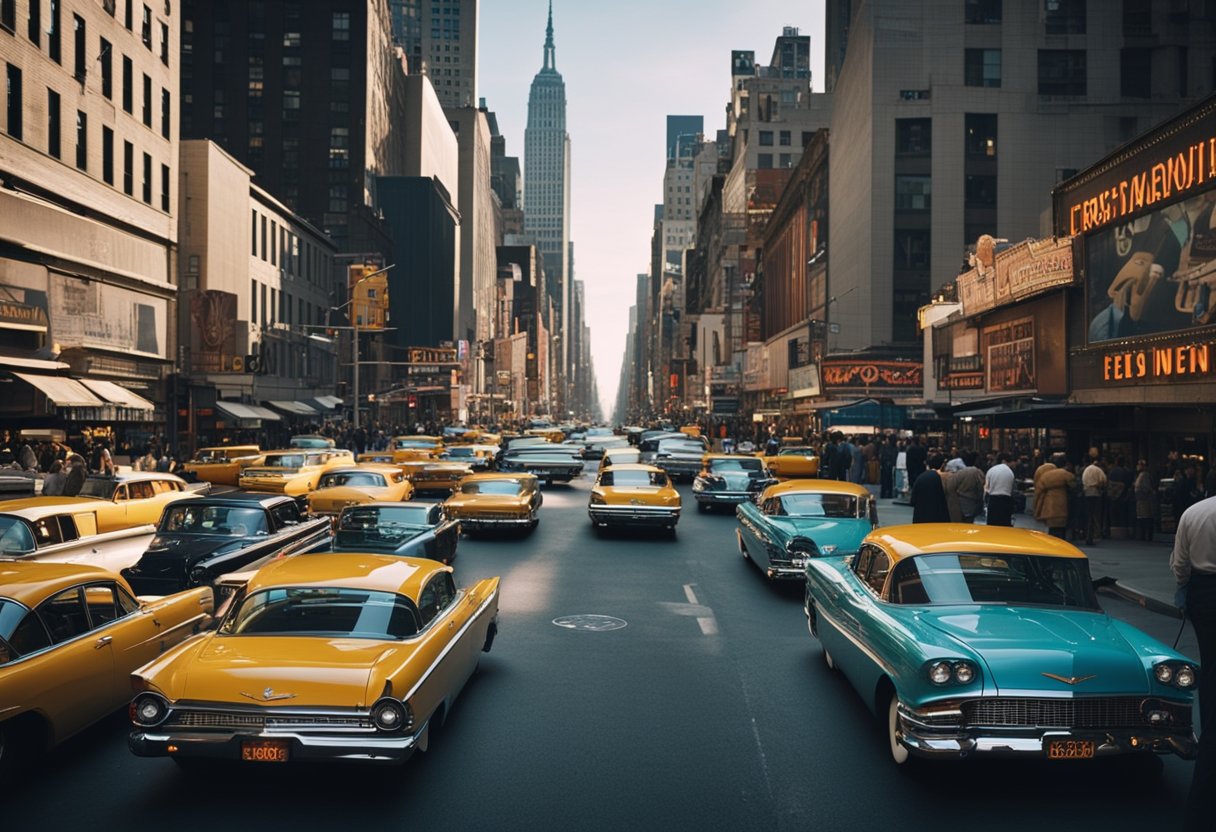
At the heart of the Mad Men experience is its remarkable soundtrack, evoking the essence of the 1960s with every note. Our exploration of Don Draper’s New York would be incomplete without acknowledging the powerful role that music plays in this iconic series.
Throughout its run, Mad Men masterfully integrated music to set the tone, define moments, and deepen our understanding of its complex characters. The selection of songs ranged from the exuberant pop hits of the era to the moody jazz tunes that reflected the undercurrent of Don Draper’s existential woes. As we near the series finale, music becomes a pivotal element that not only signifies the end of an era but also the personal transformation of the characters we have followed for seven seasons.
In the final season, the show’s nuanced use of music reached new heights, capturing the zeitgeist of the times while underscoring the personal journeys of Sterling Cooper’s staff. For instance, the narrative is heightened by the music that echoes the triumphs and turmoils of the advertising world.
Moreover, listeners seeking a tangible connection to this period need look no further than WNYC, which featured music that not only ties in with Mad Men‘s themes but also with the broader musical landscape of that transformative era. The presence of songs from Frank Sinatra to The Rolling Stones serves as a sensorial time capsule for fans and aficionados alike.
The Mad Men soundtrack is more than a mere backdrop; it is a character in its own right, narrating an unspoken storyline and inviting us to reminisce or discover the flavours of a bygone era. Through our journey with Don Draper and company, the music acts as our guide, leading us through the city’s retro locations with an authentic and resonant soundtrack.
Mad Men’s Outskirts: Beyond Manhattan
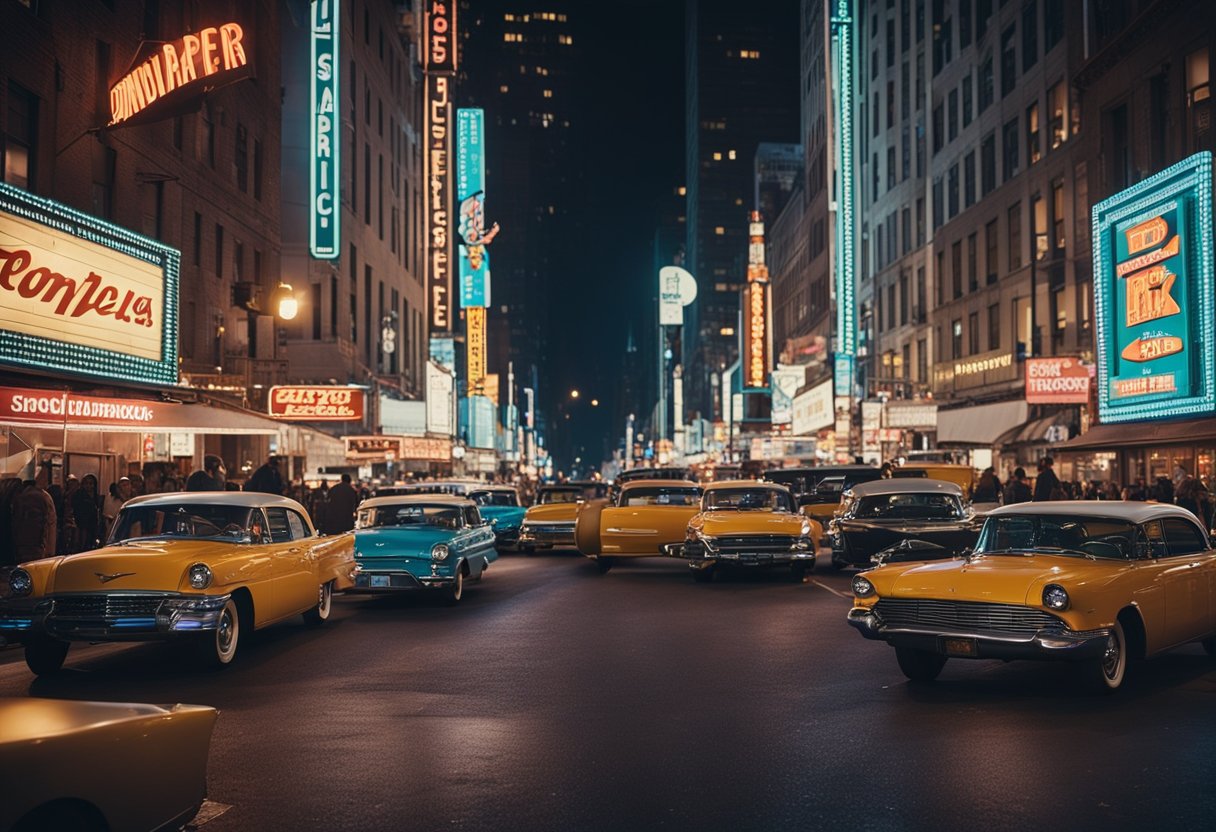
Whilst “Mad Men” is firmly rooted in the high-rise offices of Manhattan’s advertising world, the show also provides glimpses into the domestic and jet-setting lifestyle beyond the city’s boundaries.
Domestic Life in Ossining
The suburban life of the Draper family provides a counterpoint to Manhattan’s hustle. Ossining, home to Don and Betty, represents the typical post-war suburban dream with its detached houses and well-manicured lawns. It’s in stark contrast to the urban atmosphere of the Upper East Side, where characters like Pete Campbell live a more metropolitan life.
Los Angeles Escapades
In later seasons, Mad Men takes us across the country to the West Coast. Los Angeles becomes a symbol of change and new beginnings for characters like Joan Holloway. The City of Angels offers an escape from New York’s rigid corporate environment, showcasing the contrast between East and West during the 1960s.
By stepping outside of Manhattan, viewers experience the dichotomy of the decade’s divergent lifestyles – from Ossining’s familial setting to Los Angeles’s burgeoning counterculture.
New York’s Landmarks in the Show
Mad Men‘s portrayal of 1960s New York City serves as a time capsule, offering viewers an evocative glimpse into iconic landmarks that played integral roles in the show. Sterling Cooper Draper Pryce, a pivotal setting within the series, is strategically located in the Time Life Building, emblematic of the era’s business hustle.
We witness characters in the series often crossing paths with New York’s timeless majesty, including Grand Central Terminal. This landmark serves as a symbol of the city’s perpetual motion and, even today, reflects the grandeur of the period. The Roosevelt Hotel also features prominently in the narrative, offering a classic backdrop that many fans would instantly recognise.
Here’s a brief on some of the landmarks appearing in Mad Men:
- Times Square: The pulsating heart of Manhattan captures the vibrancy of the era.
- The Roosevelt Hotel: A haven for the characters’ clandestine meetings.
- Time Life Building: The epicentre of the advertising world within the show.
- Grand Central Terminal: Where the rhythm of the city keeps pace with the storylines.
- Central Park: A lush escape within the concrete jungle, alluded to various times.
As the characters navigate their personal and professional lives, these landmarks become more than mere backgrounds; they are silent narrators of the tales of aspiration and intrigue. For any enthusiast wishing to walk in the footsteps of Don Draper, these sites remain accessible and steeped in the legacy of an unforgettable era in both the real and reel life of Manhattan.
Frequently Asked Questions
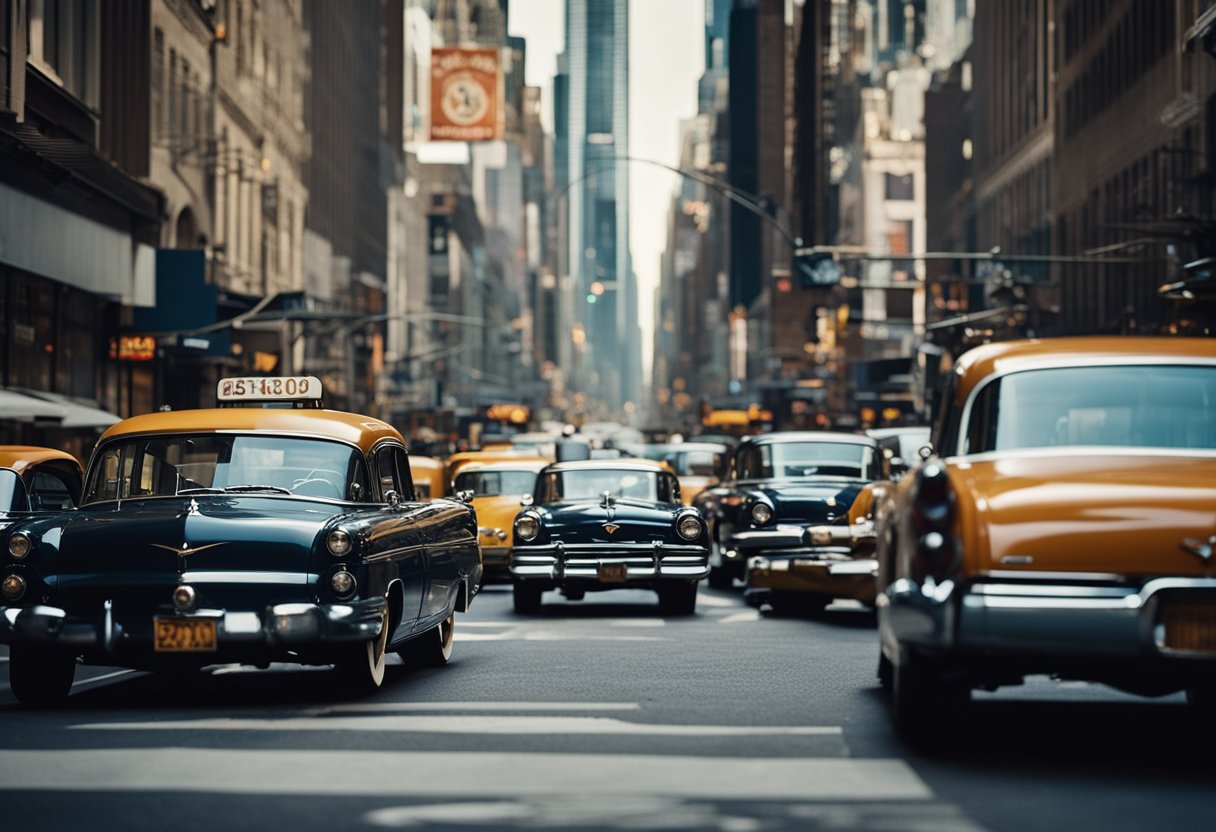
As fans of “Mad Men”, we often find ourselves drawn to the nostalgic glamour of 1960s New York City. Here, we’ve compiled some of the most common questions about the locations that defined the series.
Which New York establishments were frequented by the characters in Mad Men?
The characters in “Mad Men” were often seen at upscale establishments, such as the Stork Club and Sardi’s, epitomising the golden age of New York’s social scene.
In what area of Manhattan was Don Draper’s apartment located?
Don Draper’s iconic Apartment 17-B was located in Manhattan’s Upper East Side, a quintessential neighbourhood for the show’s advertising elite.
Can you visit the building used as Sterling Cooper’s office?
The exterior of the Sterling Cooper office building is shot at the Time & Life Building in Midtown Manhattan, which is accessible to the public.
What iconic locations featured in Mad Men are open to the public?
Many notable locations, such as the Waldorf Astoria Hotel and the Grand Central Terminal, were featured and remain prominent public landmarks today.
Which bars and restaurants in New York offer a Mad Men-like experience?
Bars and restaurants such as the Oyster Bar at Grand Central and the legendary P.J. Clarke’s continue to offer an experience reminiscent of the “Mad Men” era’s ambience.
Are any of the ad agencies portrayed in Mad Men based on real companies?
Yes, agencies in “Mad Men” are loosely based on real Madison Avenue firms from the 1960s, with Sterling Cooper modelled after some of the period’s most influential advertising houses.



